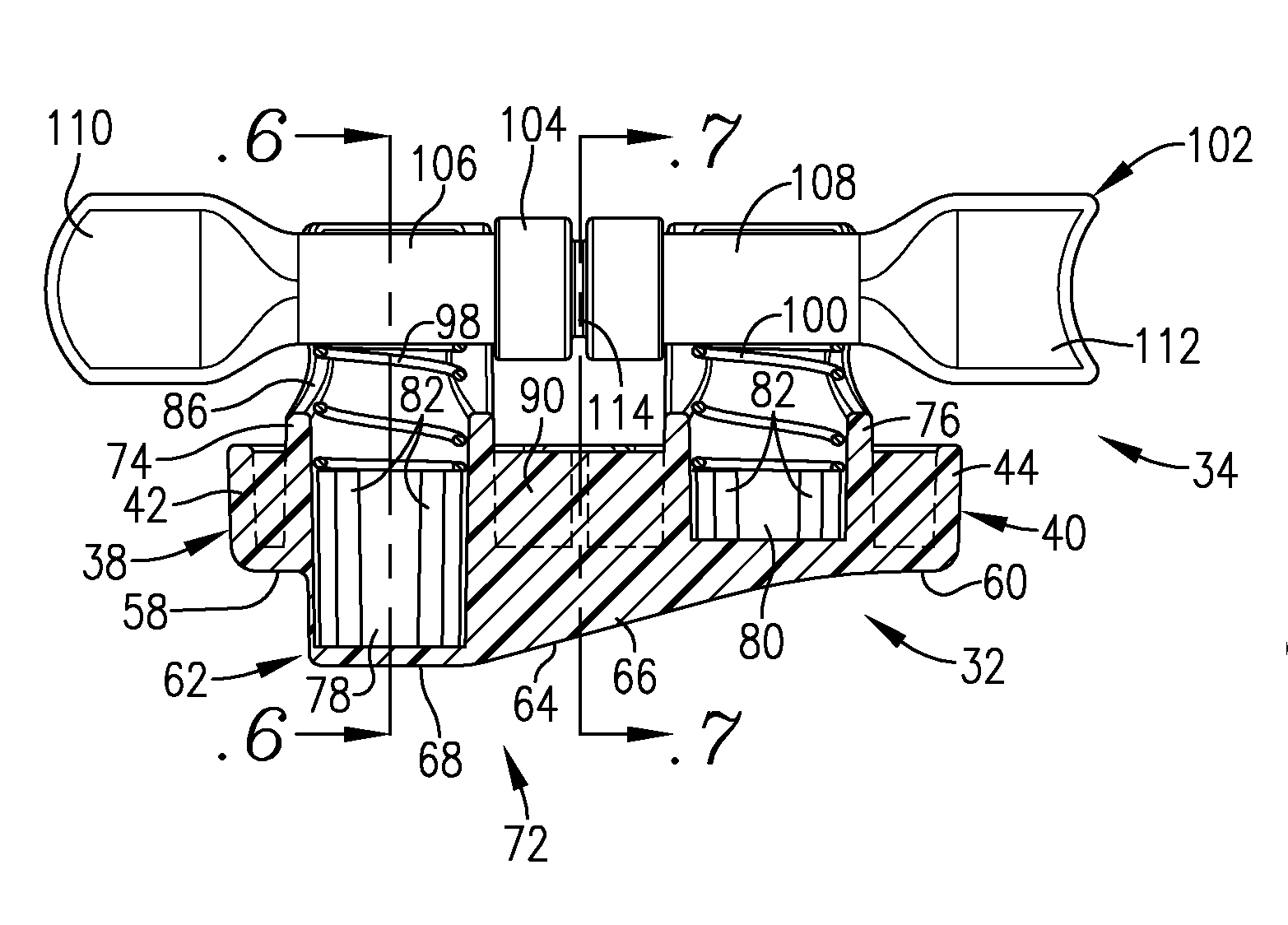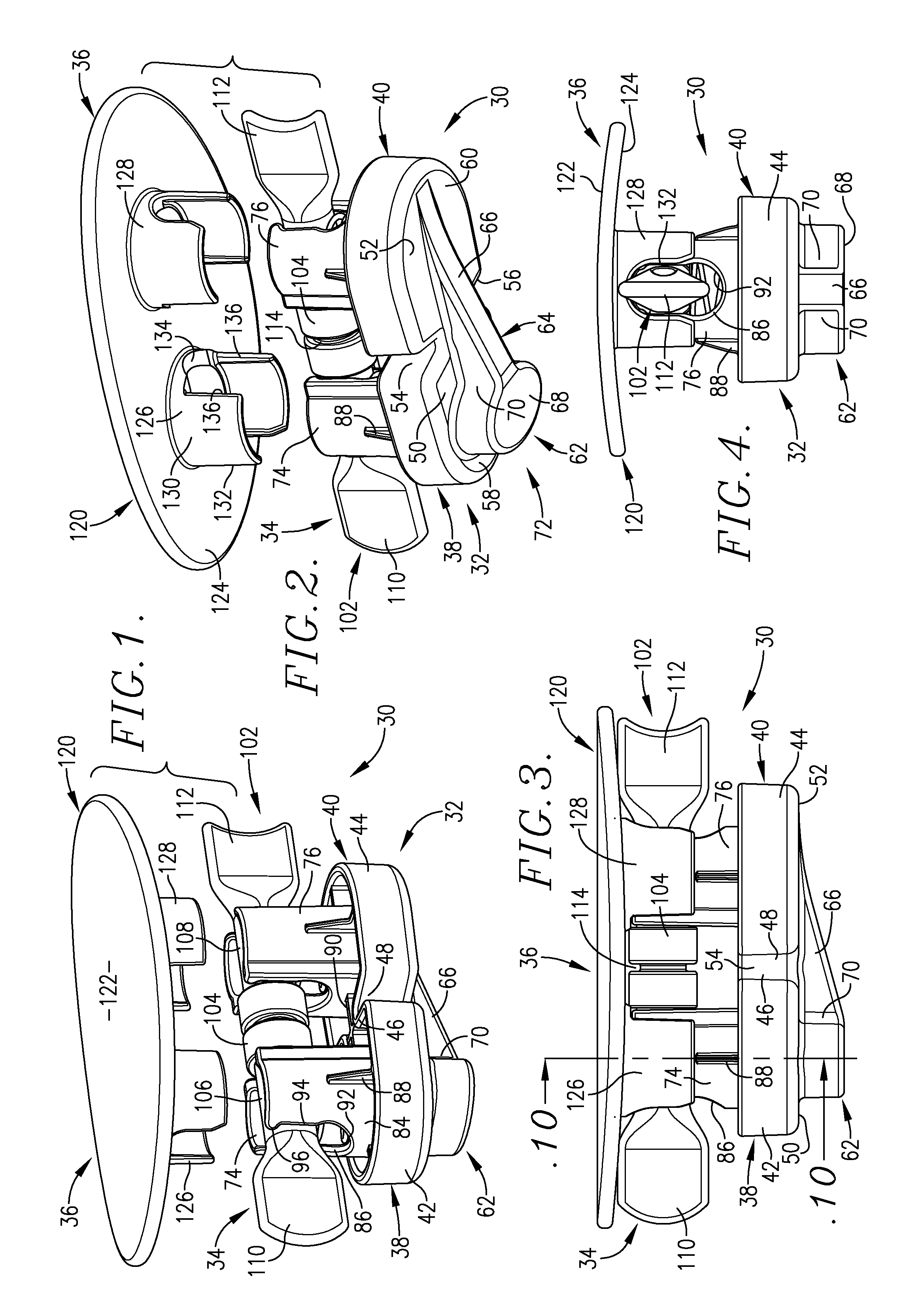Vascular wound closing apparatus and method
a wound and wound technology, applied in the field of wound closure apparatus and methods, can solve the problems of increasing hospital stays, affecting morbidity, poor wound closure, etc., and achieve the effect of reducing patient blood pressure and flow
- Summary
- Abstract
- Description
- Claims
- Application Information
AI Technical Summary
Benefits of technology
Problems solved by technology
Method used
Image
Examples
Embodiment Construction
The Preferred Wound Closure Apparatus
[0054]Turning now to the drawings, apparatus 30 operable to close a wound in a patient's tissue is illustrated in FIGS. 1-4. The apparatus 30 is particularly designed for closure of wounds attendant to an endovascular (i.e., arterial or venous) intervention involving, e.g., a femoral artery puncture where the wound presents an insertion site, an elongated, obliquely oriented tract extending into the patient's tissue and communicating with the insertion site and an arteriotomy. Broadly speaking, the apparatus 30 includes a force-transmitting body 32 having a force-exerting assembly 34 together with a removable cover or “hat”36.
[0055]As used herein, terms such as “upper” and “lower,”“top and “bottom,” and “downwardly” and “upwardly” and the like are used for convenience and because of the fact that the apparatus 30 is normally positioned in an upright orientation on a patient with the cover 36 being directly above the body 32. However, if the appar...
PUM
 Login to View More
Login to View More Abstract
Description
Claims
Application Information
 Login to View More
Login to View More - R&D
- Intellectual Property
- Life Sciences
- Materials
- Tech Scout
- Unparalleled Data Quality
- Higher Quality Content
- 60% Fewer Hallucinations
Browse by: Latest US Patents, China's latest patents, Technical Efficacy Thesaurus, Application Domain, Technology Topic, Popular Technical Reports.
© 2025 PatSnap. All rights reserved.Legal|Privacy policy|Modern Slavery Act Transparency Statement|Sitemap|About US| Contact US: help@patsnap.com



